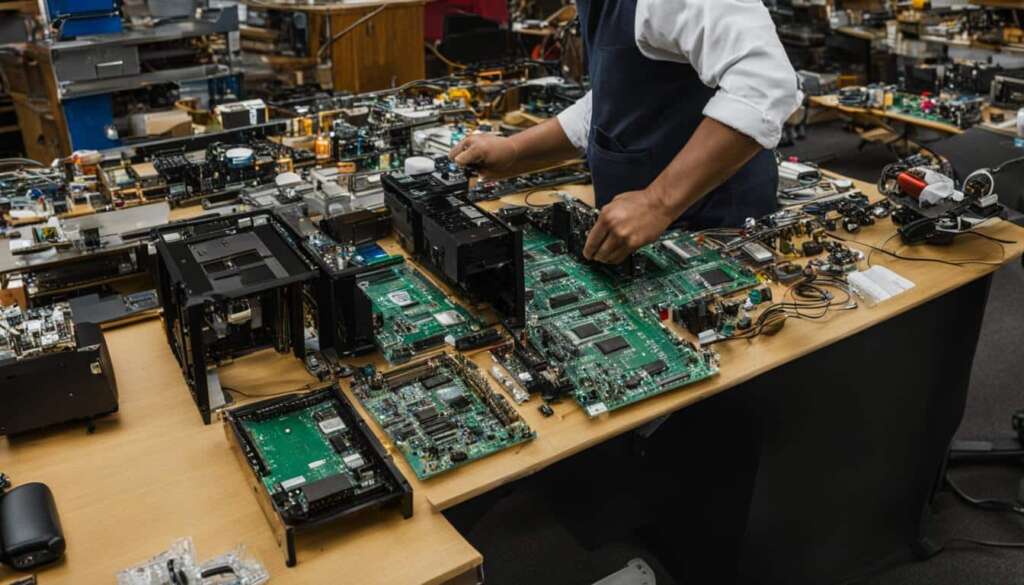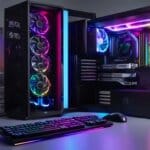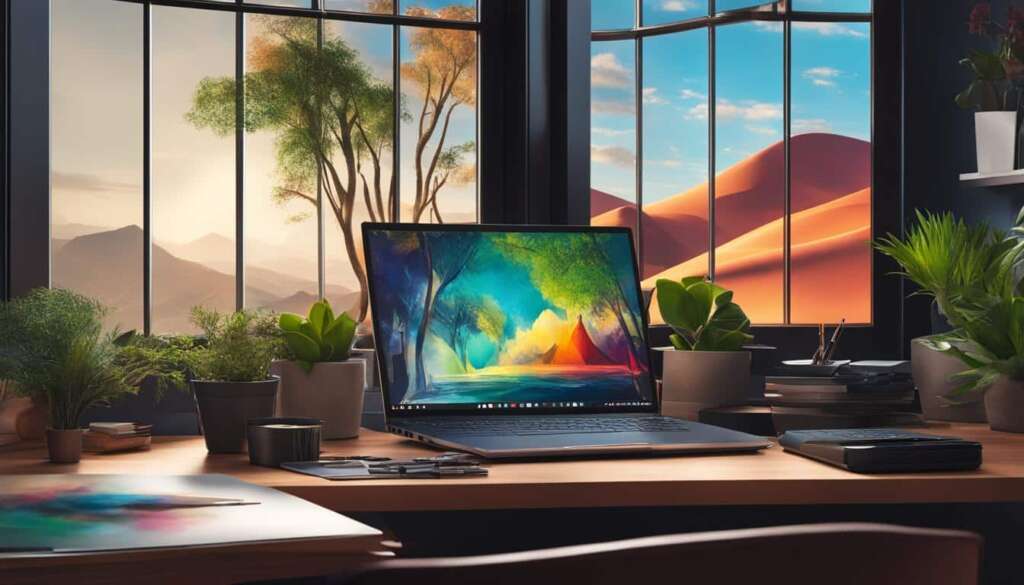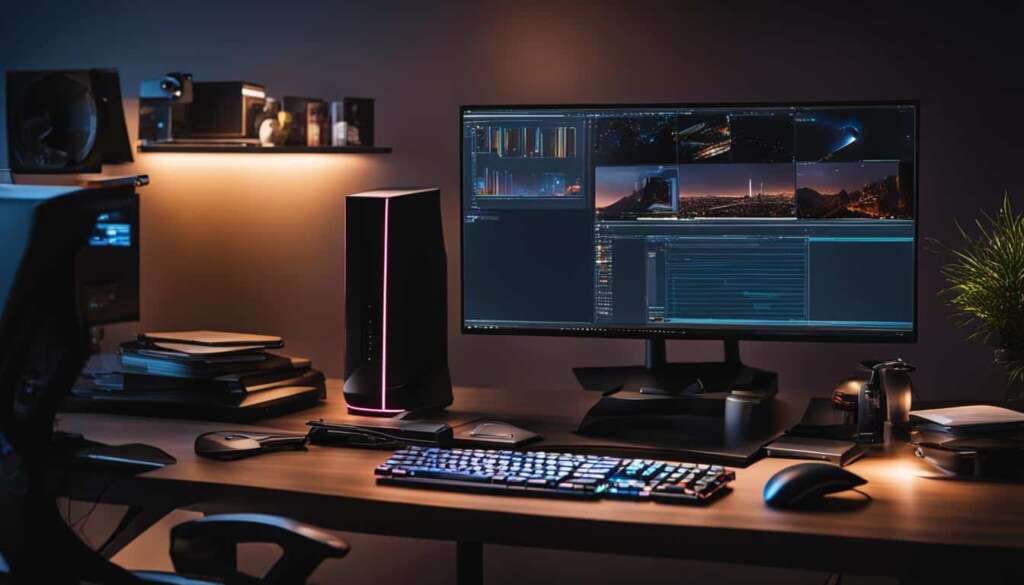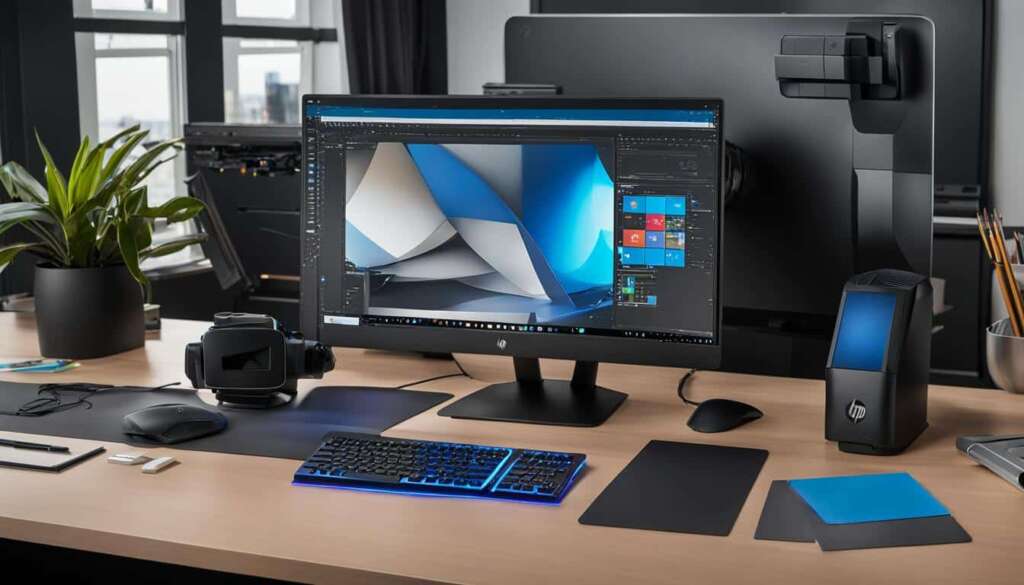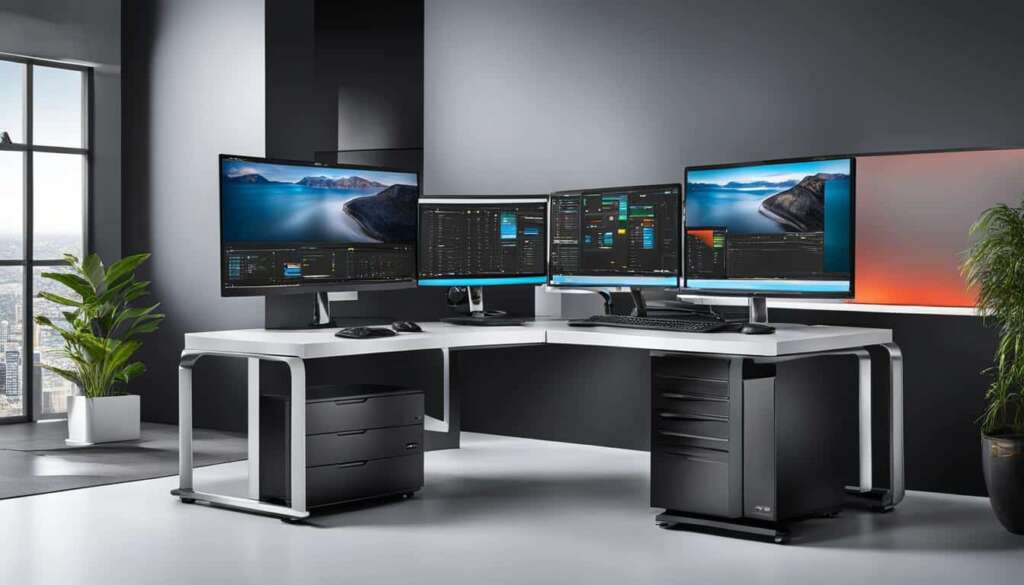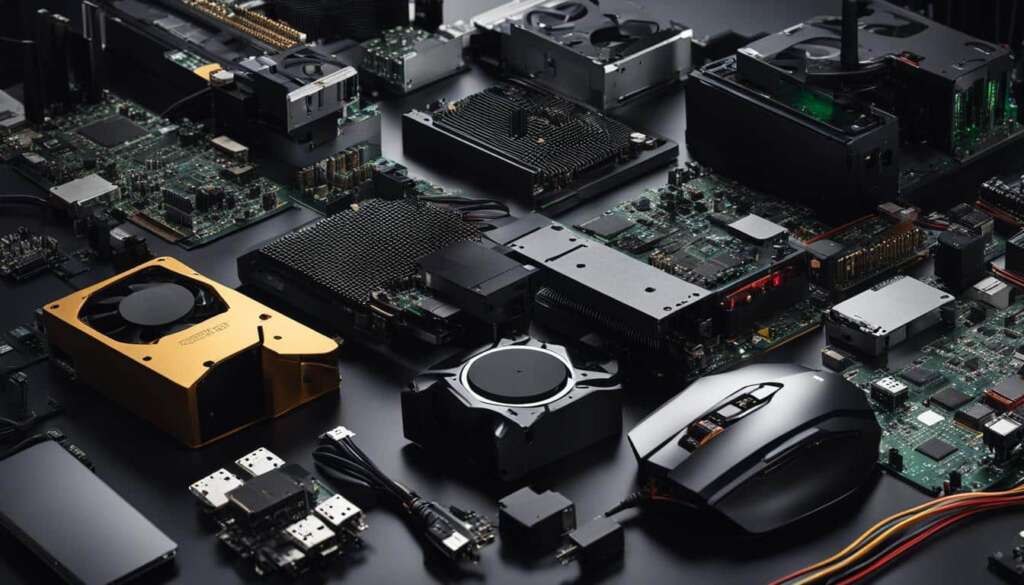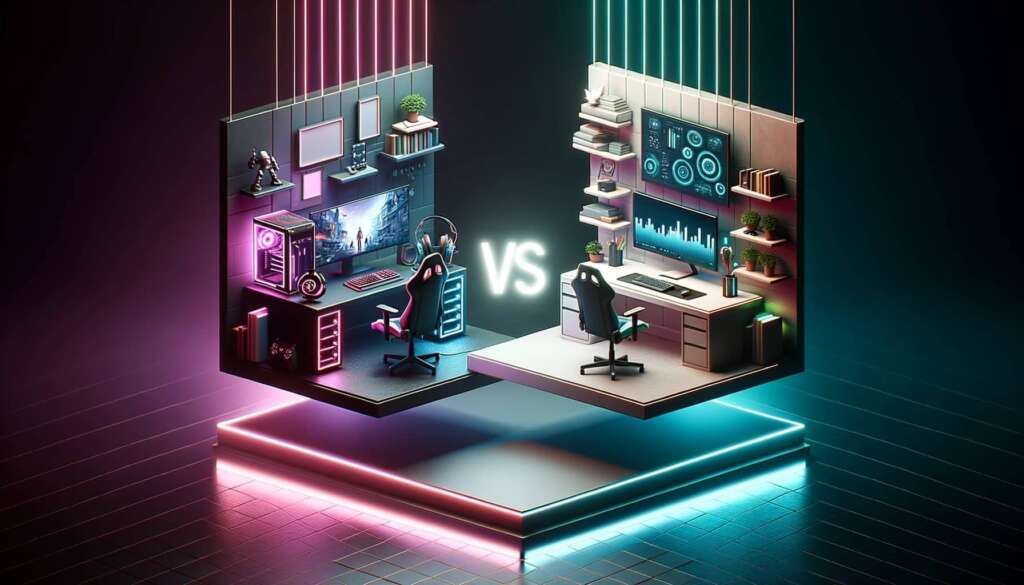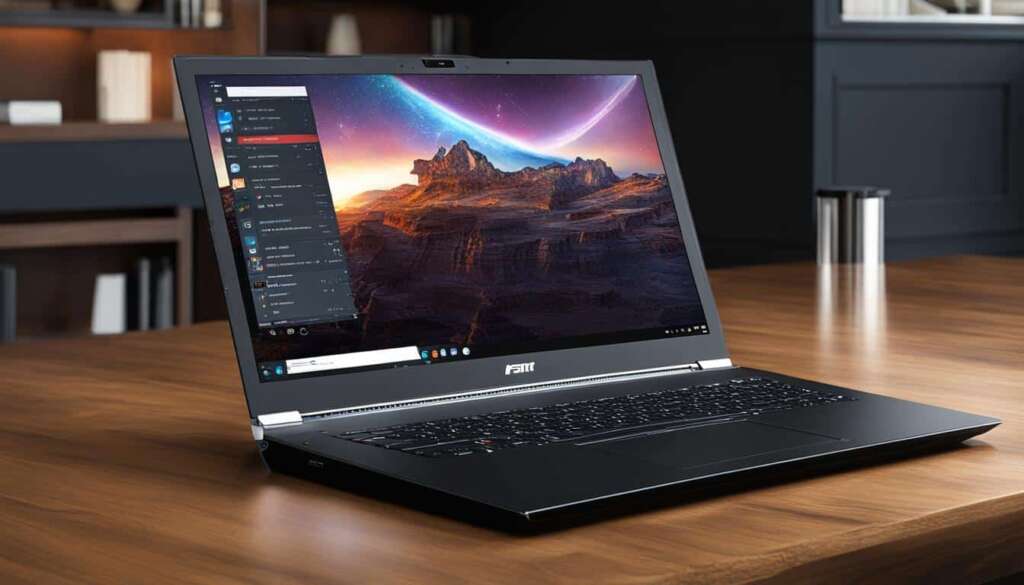Table of Contents
Welcome to our comprehensive guide on how to build a computer effectively. If you’ve ever wondered how to assemble your own PC, you’re in the right place. Building a computer may seem like a daunting task, but with the right instructions and tools, anyone can do it. It’s just like assembling furniture, but with the added benefit of being able to select the components and make it your own. Whether you’re looking to build a gaming rig or a workstation, this guide will provide you with step-by-step instructions and valuable insights to help you along the way.
Building your own computer not only gives you a sense of accomplishment but also allows you to customize your machine to your specific needs. With an abundance of online PC building guides and videos available, the process has become more accessible than ever before. Our guide aims to provide you with the context you need to select the right components and tackle any challenges you may face during the assembly process. By the end of this guide, you’ll have the knowledge and confidence to build your own DIY computer.
Choosing the Key Components
When it comes to computer construction, selecting the right components is crucial for a successful build. Each component plays a specific role in the overall performance and functionality of the PC. By carefully choosing the key components, you can ensure compatibility and optimize your computer’s capabilities.
PC Case
The PC case is more than just a housing for your components; it also contributes to the aesthetics and cooling of your build. Different case sizes and form factors, such as traditional tower, midtower, and compact cases, offer various options to suit your preferences and available space. Consider the size and layout of the case to ensure it can accommodate your motherboard, power supply, and other components.
Motherboard
The motherboard is the backbone of your computer, connecting all the components together. When selecting a motherboard, consider factors such as compatibility with your chosen CPU, socket type, and required features. Popular socket types include LGA for Intel processors and AM for AMD processors. Additionally, the form factor of the motherboard, such as ATX, MicroATX, or Mini-ITX, determines the size and layout of your build.
CPU and CPU Cooler
The CPU, or central processing unit, is the brain of your computer. It’s essential to choose a CPU that is compatible with your motherboard’s socket type to ensure proper functionality. Consider factors such as performance, power consumption, and budget when making your selection. Additionally, a CPU cooler is necessary to dissipate heat and prevent overheating. Options like air coolers or liquid cooling systems provide different levels of cooling efficiency.
Memory
RAM, or random access memory, is responsible for temporary data storage and affects the overall speed and multitasking capabilities of your computer. When choosing memory, consider factors like speed, capacity, and compatibility with your motherboard. DDR4 and DDR5 are common memory types, with different speeds available. Look for memory kits that offer automatic overclocking and optimization through XMP (Extended Memory Profiles) for enhanced performance.
| Component | Considerations |
|---|---|
| PC Case | Size, form factor, accommodation of components |
| Motherboard | CPU compatibility, socket type, form factor |
| CPU and CPU Cooler | Performance, compatibility, cooling options |
| Memory | Speed, capacity, compatibility with motherboard |
The PC Case
The PC case, also known as the computer chassis, is an integral part of building a computer. It not only houses and protects the components but also plays a significant role in the overall aesthetics and functionality of the system. There are various factors to consider when selecting a PC case, including size, form factor, and materials.
PC cases come in different sizes, such as traditional tower, midtower, and compact cases. The choice of case depends on the available space and personal preferences. If you plan to include multiple components or additional cooling systems, a larger case might be a better fit. On the other hand, if space is limited or you prefer a compact design, a smaller case can be a suitable option.
The materials used for PC cases can vary, with steel and tempered glass being the most common choices. Steel cases provide durability and sturdiness, while tempered glass cases offer a sleek and modern look, allowing you to showcase the internal components. Some cases even combine both materials for a unique and visually appealing design.
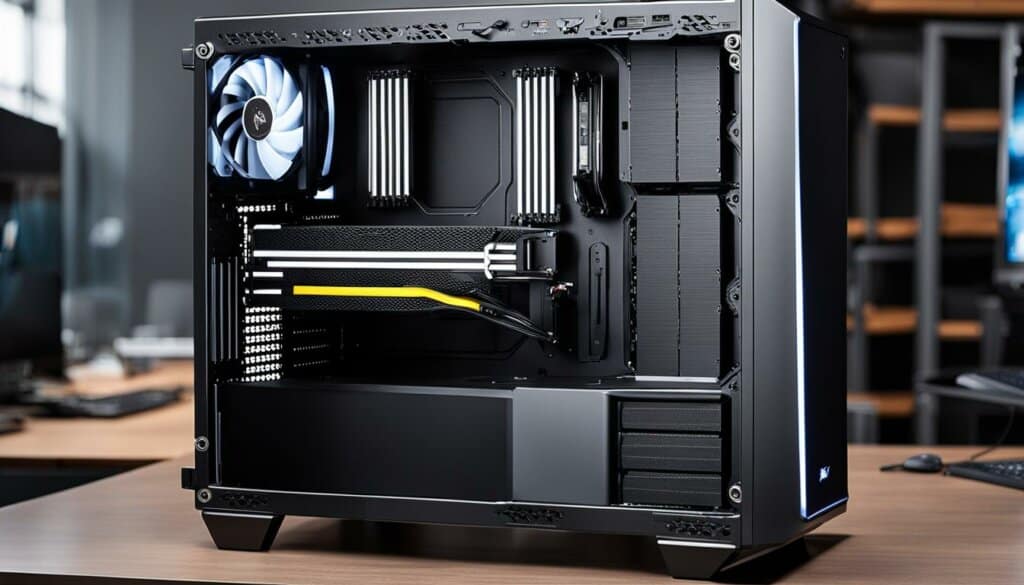
PC Case Sizes
| Size | Dimensions (Height x Width x Depth) |
|---|---|
| Tower | 18″ x 8″ x 18″ |
| Midtower | 16″ x 7″ x 16″ |
| Compact | 13″ x 5″ x 13″ |
Table: Common PC case sizes and their dimensions.
Motherboard Selection: Choosing the Right Foundation for Your PC
When it comes to building a computer, the motherboard is a critical component that serves as the foundation for all other hardware. Selecting the right motherboard is essential for ensuring compatibility and optimal performance. There are several factors to consider when choosing a motherboard, including the socket type, chipset, and form factor.
The socket type of the motherboard determines which CPUs are compatible with the system. For example, Intel CPUs typically use LGA sockets, while AMD CPUs use AM sockets. It’s important to ensure that the socket on the motherboard matches the socket type of your chosen CPU.
Another important consideration is the chipset of the motherboard. The chipset affects the features and capabilities of the motherboard, such as the number of USB ports, SATA ports, and PCIe slots. Different chipsets offer varying levels of performance and compatibility with certain hardware components.
The form factor of the motherboard determines its physical size and layout, which affects the compatibility with the PC case and other components. Common form factors include ATX, MicroATX, and Mini-ITX. It’s crucial to choose a motherboard that fits your preferred form factor and aligns with the size and layout of your chosen PC case.
| Motherboard Socket Types | Chipset | Form Factor |
|---|---|---|
| LGA 1151 | Intel Z390 | ATX |
| AM4 | AMD X570 | MicroATX |
| LGA 1200 | Intel B460 | Mini-ITX |
Choosing the right motherboard is crucial for a successful PC build. It’s important to research different options, read reviews, and consider your specific needs and budget. By carefully selecting a motherboard that aligns with your requirements, you can lay a solid foundation for your PC and ensure compatibility with your chosen components.
CPU and CPU Cooler: Selecting and Installing the Essential Components
When it comes to building a computer, selecting the right CPU (central processing unit) and CPU cooler are crucial for optimal performance and temperature control. The CPU acts as the brain of the computer, executing instructions and processing data, while the CPU cooler ensures that the CPU doesn’t overheat. Let’s explore the key factors to consider when choosing a CPU and installing a suitable CPU cooler.
CPU Selection: Finding the Perfect Fit
Choosing the right CPU involves considering factors such as performance, power consumption, and compatibility with your motherboard’s socket type. Intel and AMD are the leading manufacturers of CPUs, offering a wide range of models to suit different needs. Consider your budget, intended use (gaming, video editing, or general computing), and the software you plan to run. Research the latest CPU models, compare their specifications, and read reviews to make an informed decision. It’s important to ensure that the CPU you choose is compatible with your motherboard to avoid any compatibility issues.
CPU Socket Type: Ensuring a Perfect Match
When selecting a CPU, it’s crucial to consider the socket type of your motherboard. The socket type determines the physical connection between the CPU and the motherboard. Common socket types for Intel CPUs include LGA1151, LGA1200, and LGA2066, while AMD CPUs use socket types such as AM4, TR4, and sTRX4. Check your motherboard’s specifications or consult the manufacturer’s website to determine the compatible socket types. Installing a CPU that doesn’t match your motherboard’s socket type can result in compatibility issues and system instability.
CPU Cooler Installation: Keeping Temperatures in Check
Once you’ve selected a CPU, it’s important to install a suitable CPU cooler to dissipate heat and maintain optimal temperatures. CPU coolers come in various forms, including air coolers and liquid cooling systems. The installation process may vary depending on the type of CPU cooler you choose, so it’s essential to follow the manufacturer’s instructions carefully. Ensure that the cooler is securely attached to the CPU and that thermal paste is applied correctly to facilitate heat transfer. Proper installation of the CPU cooler is vital for preventing overheating and ensuring the longevity of your CPU.
| CPU Manufacturer | Socket Types |
|---|---|
| Intel | LGA1151, LGA1200, LGA2066 |
| AMD | AM4, TR4, sTRX4 |
The Memory Kit
When it comes to building a computer, selecting the right memory kit is crucial for optimal performance. RAM (random access memory) plays a vital role in the computer’s ability to handle multiple tasks and run applications smoothly. Proper memory selection involves considering factors such as RAM speed and compatibility with the motherboard.
There are different types of memory available, with DDR4 and DDR5 being the most common in today’s computers. DDR4 offers varying speeds, allowing you to choose the one that best suits your needs. Higher RAM speed can contribute to faster data transfer and overall system responsiveness. It’s important to ensure that the chosen memory kit is compatible with the motherboard’s specifications, including the maximum supported RAM capacity and speed.
Quote: “Selecting the right memory kit is crucial for optimal performance.”
Installing the memory kit involves inserting the RAM sticks into the appropriate slots on the motherboard. It’s essential to follow the manufacturer’s guidelines to ensure proper installation and prevent any potential damage. Additionally, some motherboards support XMP (Extended Memory Profiles), which enables automatic overclocking and optimization of memory performance for enhanced speed and efficiency.
To provide a comprehensive overview of different memory options, the table below compares two popular DDR4 memory kits based on their speed, capacity, and latency:
| Memory Kit | Speed | Capacity | Latency |
|---|---|---|---|
| Kit A | 3200MHz | 16GB (2x8GB) | CL16 |
| Kit B | 3600MHz | 32GB (2x16GB) | CL18 |
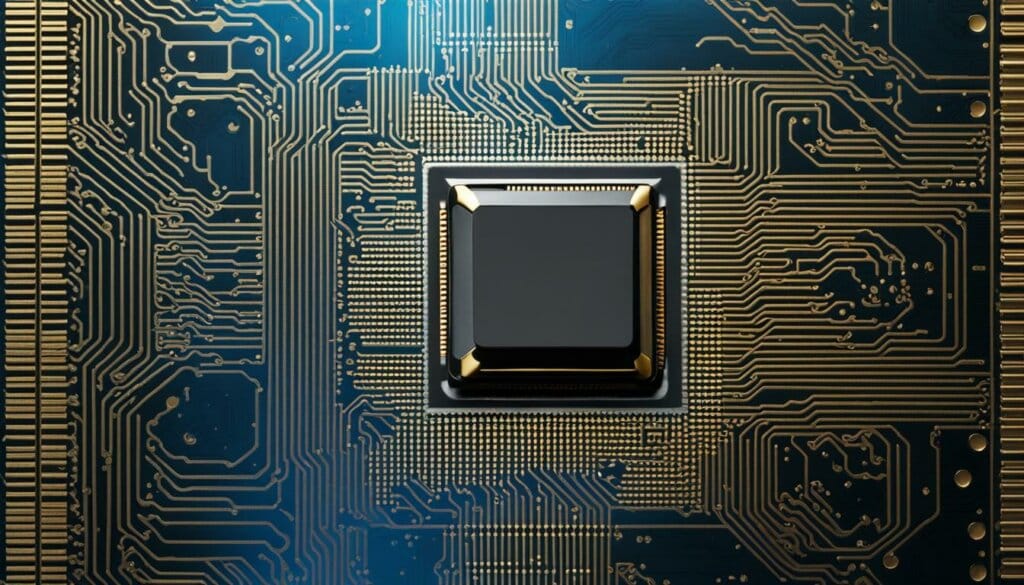
By comparing the two memory kits, you can see that Kit B offers a higher speed and larger capacity, making it suitable for demanding tasks such as video editing or gaming. However, Kit A provides a good balance between performance and affordability for general computer usage.
Remember to check the motherboard’s manual and specifications before purchasing a memory kit to ensure compatibility and optimal performance. With the right memory kit installed, your computer will be equipped to handle multitasking and resource-intensive applications efficiently.
Conclusion
Building a computer from scratch may seem intimidating, but with the right guidance and knowledge of the key components, anyone can successfully assemble their own PC. This comprehensive guide has covered the essential steps and considerations for building a computer effectively. From choosing the right components to installing them properly, building a custom computer can be a rewarding experience.
By embarking on a DIY computer project, you have the opportunity to create a personalized computer that meets your needs and preferences. Whether you’re a gamer, a creative professional, or simply someone who wants a powerful and unique machine, custom computer building offers endless possibilities.
To ensure a successful build, be sure to follow the computer building tips provided throughout this guide. Remember to consider factors like compatibility, performance, and functionality when selecting components. Take your time during the assembly process and consult manuals or online resources if you encounter any difficulties.
Now armed with the knowledge gained from this guide, you can confidently embark on your own DIY computer building journey. Enjoy the process, and revel in the satisfaction of knowing that you have created a one-of-a-kind computer tailored to your exact specifications.
FAQ
Is building your own computer difficult?
Building your own computer may seem daunting, but with basic instructions and the right tools, anyone can do it.
Where can I find step-by-step instructions for building a computer?
PC building guides and videos are available online to provide step-by-step instructions.
What are the key components of a desktop PC?
The key components include the PC case, motherboard, CPU, CPU cooler, memory (RAM), storage drives (SSD or HDD), power supply, and graphics card.
What factors should I consider when selecting components for my computer?
Factors like size, form factor, socket type, and supported technology should be considered when choosing the components.
What is the role of the PC case in a computer build?
The PC case sets the tone for the entire build and affects the overall aesthetics and functionality.
What materials are commonly used for PC cases?
Materials like steel and tempered glass are commonly used for cases, offering options for visual coordination and customization.
What is the motherboard’s role in a computer build?
The motherboard is the foundation of the computer and determines the compatibility and performance of other components.
What factors should I consider when selecting a motherboard?
The motherboard should be selected based on CPU compatibility, socket type, form factor, and required features.
What is the CPU’s role in a computer build?
The CPU (central processing unit) is the brain of the computer and works in conjunction with the motherboard.
How do I choose the right CPU?
The choice of CPU should consider factors like performance, power consumption, and compatibility with the motherboard’s socket type.
What is the role of memory in a computer build?
Memory, also known as RAM (random access memory), plays a crucial role in the performance of a computer.
What factors should I consider when selecting a memory kit?
The selection of a memory kit should consider factors like speed, capacity, and compatibility with the motherboard.
Is building a computer from scratch difficult?
Building a computer from scratch may seem intimidating, but with the right guidance and knowledge of the key components, anyone can successfully assemble their own PC.

